On May 1, 2005, thanks to a thorough study at the City of Westminster Archives Center (the archive of the City of London, which contains documentary collections on the history of the urban center plus Marylebone and Paddington), the remains could be located and recovered. of an iconic World War II aircraft:a Hawker Hurricane that had been buried since 1940, after crashing during one of the combats of what is known as the Battle of Britain.
But, although all those who participated in that desperate defense against the incursions of the Luftwaffe are considered heroes (remember Churchill's words:«Never have so many owed so much to so few» ), that was not just another device. His pilot's name was Raymond Towers Holmes and she had carried out a feat as brave as it was unheard of by preventing a German bomber from releasing its deadly load on Buckingham Palace by ramming it with his plane as it had run out of ammunition.
Ray Holmes, as he was commonly known, was born in 1914 in the English town of Wallasey (Cheshire). He was the son of a journalist and so followed in his footsteps in that profession, working for the Birkenhead Advertiser newspaper. , being in charge of covering crime news. In the mid-1930s, the world was in a state of growing tension and the Spanish Civil War became a testing ground for what everyone saw as more and more likely, a conflict of continental scope. That is why the main powers began to prepare and in 1936 Holmes enlisted in the Royal Air Force Volunteer Reserve, groups of volunteer reservists who, together with those of the Royal Auxiliary Air Force, constituted a valuable complementary aid for the RAF.
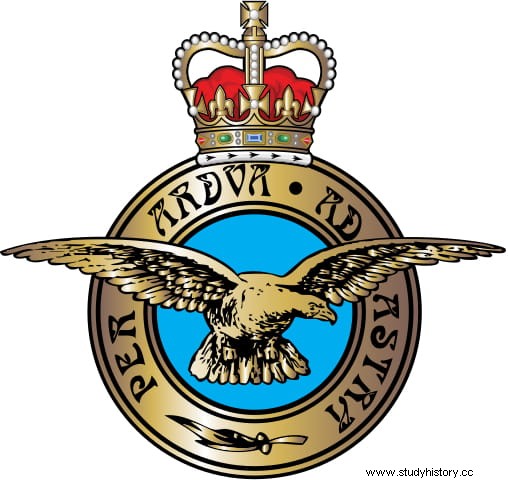
When World War II finally broke out, the UK and its Commonwealth partners were the only ones in a position to offer resistance to mighty Nazi Germany; especially at sea, where the Royal Navy was still superior to the Kriegsmarine, which in its Plan Z (an ambitious shipbuilding program) and given insufficient time to have a navy of the required potential ready, he focused above all on building a large fleet of submarines and small ships.
But in the air things were different, because the Luftwaffe had achieved that potential. During the early stages of the war, after the British withdrawal from Dunkirk and the surrender of France, Britain was alone and isolated, and its surrender seemed imminent. Or, at least, that is how Hitler believed it, who ordered not to attack his territory in hopes of peacefully resolving it in what he hoped would be a blow that, incidentally, would prevent further losses to his army such as those suffered in the capture of Norway. . However he met with stubborn resistance from Churchill, so he resumed the invasion plan of the islands, called Sea Lion .
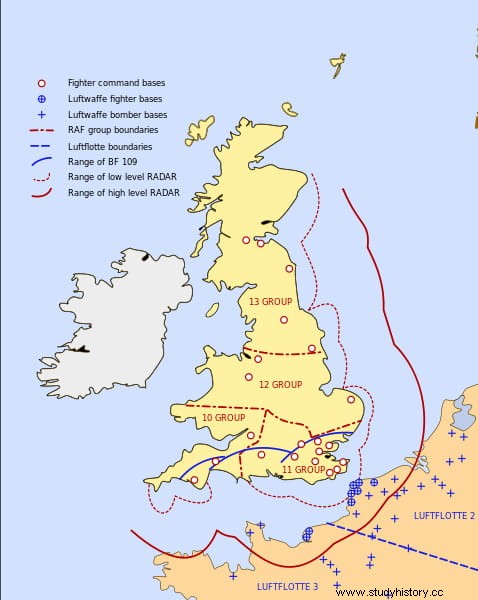
Given the inferiority of the German fleet, in order to cross the English Channel and carry out a landing, it was necessary for the Luftwaffe to be in charge of keeping the Royal Navy at bay, for which it was inevitable to first achieve air dominance. And for that, the RAF had to be defeated, something that Hermann Göring promised would be a reality in a few days. To his bewilderment, the thing lasted much longer:four months that, on top of that, ended in failure. It was the beginning of the Battle of Britain, as Churchill himself baptized it:«I expect that the Battle of Britain is about to begin» .
It started on July 10, 1940, and by then Ray Holmes had been in the RAF's 504th Squadron for a month, a reserve unit based at Rutland that had initially been formed from light bombers but in 1939, given the circumstances, was reconverted. in a combat squadron equipping itself with Hawker Hurricane aircraft. This model, one of the most popular of the Second World War, was a single-seat fighter (the first monoplane of the RAF) that, together with the Supermarine Spitfire -to a lesser extent- was responsible for the interception of German incursions into British airspace.
The Hurricanes staged epic duels with their enemy counterparts, the Messerschmitt Bf 109, which were in charge of escorting the bombers (although they were not designed for that and that is why their performance was irregular, beginning to be replaced in 1942 by the Focke- Wulf Fw 190). However, the Holmes episode did not have them as adversaries but directly the bombers, who in the Battle of Britain presented two different models. The first was the Heinkel He 111, very resistant but whose limitations in speed and maneuverability, along with insufficient defense, ended up making it obsolete before the end of the war.
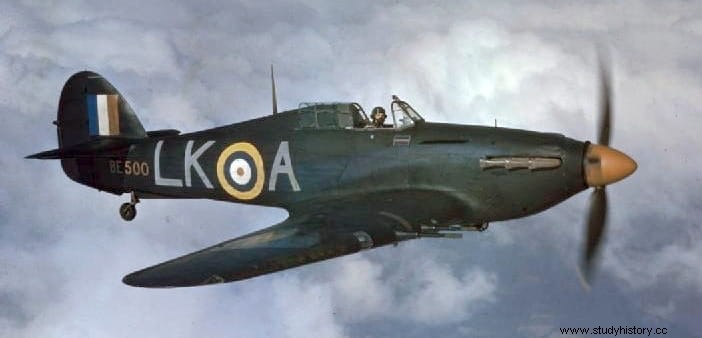
The other was the Dornier Do 17, a type of aircraft nicknamed Fliegender Bleistift (Flying Pencil) for its slenderness, which gave it lightness and speed enough to leave the fighters behind. and that is why they were initially designed without machine guns, although later it was decided to incorporate a dorsal and a ventral rear MG 15. In reality, the Dornier would also become outdated and although it participated in the entire war, as early as the summer of 1940 it began to be replaced, first by the Junkers Ju 88 and later by the Dornier Do 217. Before that, a couple of units met with Holmes' Hurricane in the sky over London.
The Luftwaffe had been carrying out continuous waves of bombing for two and a half months, without achieving its objective of discouraging the British population, when on September 15, 1940, promoted to sergeant and piloting a Hurricane, Holmes was up there, doing his duty. He was flying over London when he saw a formation of three Dornier Do 17s belonging to KG 76 (Kampfgeschwader 76), a fighter wing created in 1939 and made up of three gruppen of bombers, of which that trio constituted one.
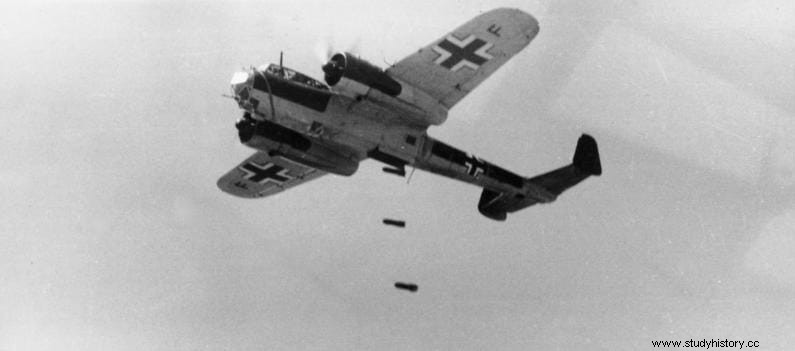
The course they had taken took them directly to the center of the British capital, so their intentions were clear. Holmes launched himself at them, focusing his attack on one, but another shot him with a flamethrower, and although the Hurricane was unharmed -because that type of weapon is not intended for use at almost five thousand meters where they were, and the fire was consumed before reaching the plane-, the windshield was impregnated with fuel, which made it difficult for the pilot to see.
Holmes could only wait for the frontal airflow to eliminate him but when at last he could see something he discovered that he was practically on top of the Dornier, which he had to dodge to avoid a collision, passing under his belly very hurriedly. . He then turned on the other enemy, unleashing a blast that made something fall from the device. At first, Holmes thought that he had managed to break the wing but then it turned out that the falling piece was actually an injured crew member parachuting.
The bad thing was that the ropes caught on the wing of the Hurricane, destabilizing it. Holmes had to bank and turn from side to side until he managed to shake off that unusual load and thus be able to line up with the third bomber while dodging the shots from his rear MG 15s; probably at that time the British pilot would have wished that the Dorniers had been built according to their original design, without weapons, relying on their top speed of 390 kilometers per hour.
But that would also have meant that the German plane would have escaped him, and Holmes was determined to prevent it from unleashing its deadly payload over central London, where Buckingham Palace loomed as his target. So, he overtook him and then turned to attack him head-on, safe from the machine guns... and when he activated his he discovered that they did not fire; he had run out of ammunition. He barely had a few seconds to make the big decision of his life, perhaps inspired by the previous incident:to ram the Dornier head-on.
Now, it wasn't a kamikaze . The idea was not to just collide, which meant certain death, but to go right over it and break its tail, which, as he himself said, "looked very fragile and attractive" . And, indeed, with a risky maneuver he passed over the fuselage and ripped off the port side fin, thinking that the plane would be unable to continue forward and even more so to return. But, in fact, he had unintentionally destroyed the entire rear half of her. The Hurricane was also unscathed, losing control and plummeting.
Unable to control it, Holmes jumped, but not before hitting first the cockpit and then the fin. In the end he was able to open his parachute and as he descended he watched the Dornier crash near London Victoria Station. A camera filmed the battle and captured the dramatic moment, as you can see in the image below. The German pilot, by the way, was called Robert Zehbe and he survived in the first instance because, apparently, he had abandoned the ship with his crew leaving the autopilot on (that is, Holmes rammed an empty plane) but he was badly injured and died a little later.
The fall of the British was not very epic:he had to swing to avoid the electrical cables of the Metro and that pushed him against a block of houses. He landed hard on the slate roof of a three-story building and slid down it without being able to stop, fearing that he was going to senselessly kill himself. Eventually the parachute fabric caught on a pipe and stopped him just as his feet hit the ground. The grace of the matter was that they were left in a garbage can.
He was in the small garden of an interior courtyard and while he was taking off his harness two girls from the neighboring garden ran to help him; "I went over the fence and we all kissed" he would count. At that time he still did not know that his unique duel with the German bomber had had numerous witnesses:a group of people from Hyde Park; several children who played football without paying attention to the alarm sirens, from Victoria Station (and they provided the curious detail that, when the pipe burst, the water flooded the vicinity)...
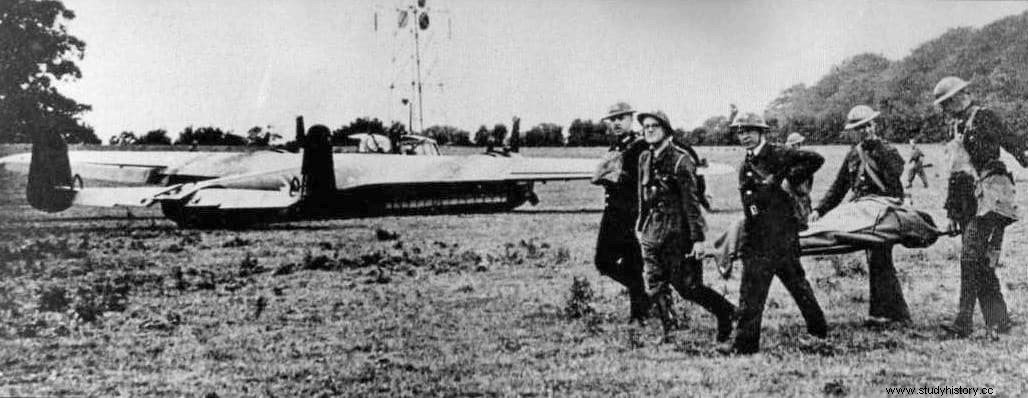
They all ran to hug him and shake his hand while he, somewhat confused, watched as they lifted him on their shoulders to take him to the Chelsea barracks. It was just the beginning of a real wave of popularity, duly cheered by the press not only for saving Buckingham Palace but also for the way he did it, since ramming the enemy was not part of any RAF manual (it would set school). because in 1941 a Soviet MIG-3 rammed another Dornier 17). No wonder he received a congratulatory note from the most unlikely witness to his heroic deed:Queen Wilhelmina of the Netherlands (she was in exile in London).
Britain won the Battle of Britain the following month, in the first half of October 1940, when the Luftwaffe, unable to break the RAF, put an end to Sea Lion to dedicate himself to Operation Barbarossa (the invasion of the USSR). But the war continued and the Blitz (the bombings) too. And Holmes was still a pilot, so once he recovered he joined the 81st Squadron and was sent to Murmansk (USSR) as a flight instructor, to teach the Soviet pilots how to handle the Hawker Hurricane, since they had been given several units. It is known that another victory was also scored there, a Messerschmitt Bf 109 fighter.
In April 1941 he married Elisabeth Killip - with whom he had two daughters - and in the following years he rose to flight officer and lieutenant. He returned to England in 1943, continuing as an instructor for two more years at Montrose Air Base, Scotland, but finishing the war in the 541st Squadron at the controls of a Spitfire. At the end of the conflict and after a brief period in the Corps of King's Messengers (diplomatic mail of the Foreign and Commonwealth Office), he resumed his work as a journalist in the press agency of his father.
In 1964 he was widowed and two years later he remarried Anne Holmes. His fame was still considerable, to the point that in 1989 he published an autobiography titled Sky Spy. From Six Miles High to Hitler's Bunker . He died of cancer in 2005, less than two months after the wreckage of his plane was found; they are displayed alongside those of the Dornier at the Imperial War Museum.
